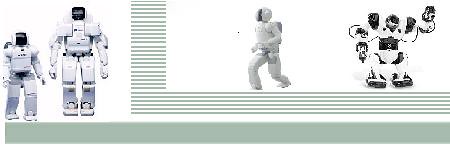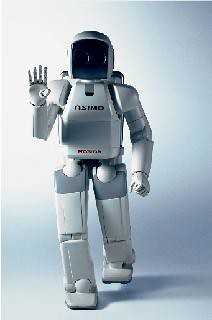1818 - Mary Shelley wrote "Frankenstein" which was about a frightening artificial lifeform reated by Dr. Frankenstein.
1921 - The term "robot" was first used in a play called "R.U.R." or "Rossum's Universal Robots" by the Czech writer Karel Capek. The plot was simple: man makes robot then robot kills man!
1941 - Science fiction writer Isaac Asimov first used the word"robotics" to describe the
technology of robots and predicted the rise of a powerful robot industry.
1942 - Asimov wrote "Runaround", a story about robots which contained the "Three Laws of Robotics":
A robot may not injure a human, or,through inaction, allow a human being to come to harm.
A robot must obey the orders it by human beings except where such orders would conflicts with the First Law.
A robot must protect its own existence as long as such protection do not conflict withe the First or Second Law.
1948 - "Cybernetics", an influence on artificial intelligence research was published by Norbert Wiener.
1956 - George Devol and Joseph Engelberger formed the world's first robot company.
1959 - Computer-assisted manufacturingg was demonstrated at the Servomechanisms Lab at MIT.
1961 - The first industrial robot was online in a General Motors automobile factory in New Jersey. It was called UNIMATE.
1963 - The first artificial robotic arm to be controlled by a computer was designed. The Rancho Arm was designed as a tool for the handicapped and it's six joints gave it the flexibility of a human arm.
1965 - DENDRAL was the first expert system or program designed to execute the accumulated knowledge of subject experts.
1968 - The octopus-like Tentacle Arm was developed by Marvin Minsky.
1969 - The Stanford Arm was the first electrically powered, computer-controlled robot arm.
1970 - Shakey was introduced as the first mobile robot controlled by artificial intellence. It was produced by SRI International.
1974 - A robotic arm (the Silver Arm) that performed small-parts assembly using feedback from touch and pressure sensors was designed.
1979 - The Standford Cart crossed a chair-filled room without human assistance. The cart had a tv camera mounted on a rail which took pictures from multiple angles and relayed them to a computer. The computer analyzed the distance between the cart and the obstacles.



























